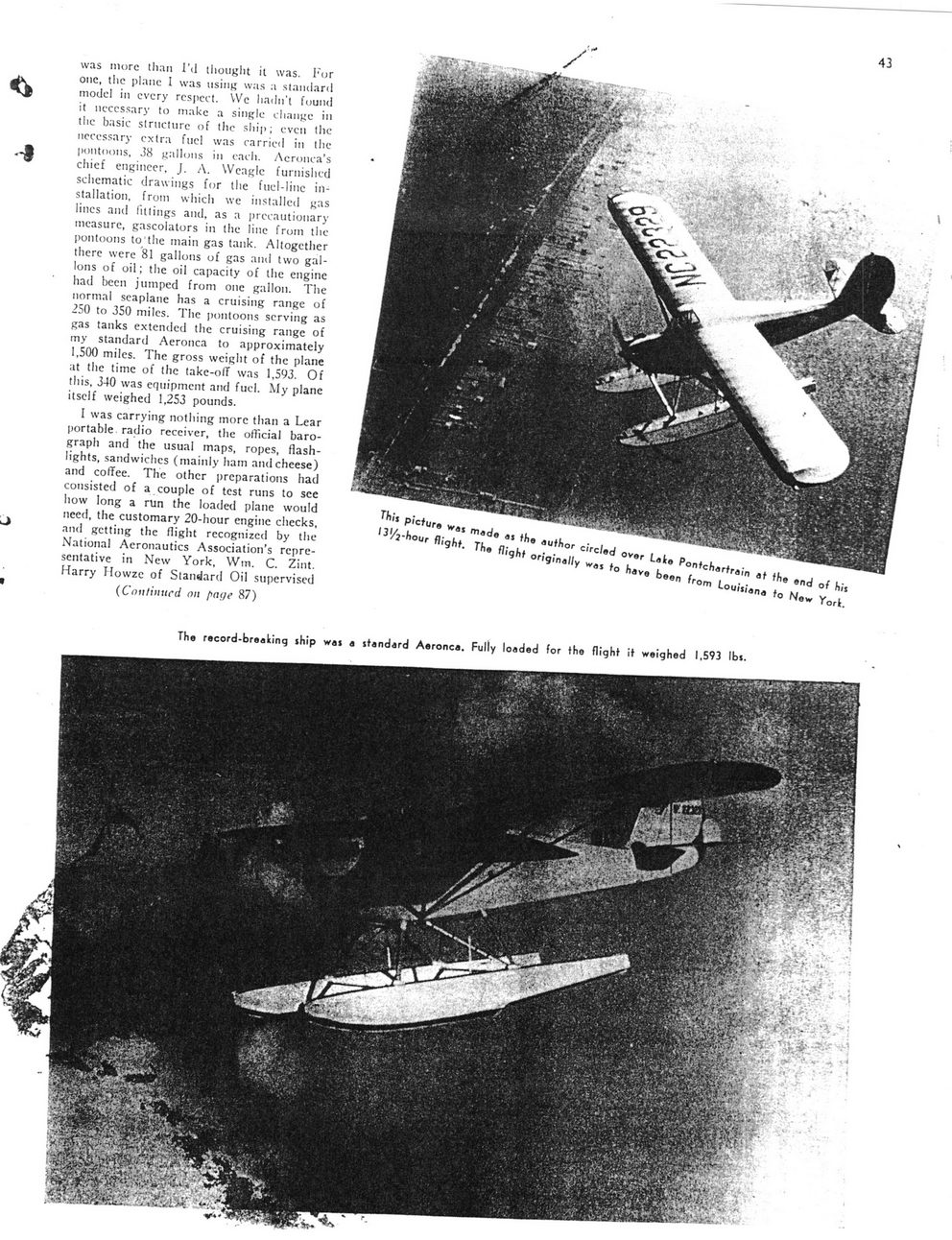This text was obtained via automated optical character recognition.
It has not been edited and may therefore contain several errors.
43
was more than I'd thought it was. For otic, the plane I was using was a standard model in every respect. We hadn't found it necessary to make a single change in the basic structure of the ship; even the necessary extra fuel was carried in the pontoons, .38 gallons in each. Aerouca?s chief engineer, J. A. Wcagle furnished schcmatie drawings for the fuel-line installation, from which we installed gas lines and lutings ami, as a precautionary measure, gascolators in the line from the pontoons to the main gas tank. Altogether there were 81 gallons of gas and two gallons of oil; the oil capacity of the engine had been jumped from one gallon. The normal seaplane has a cruising range of 250 to 350 miles. The pontoons serving as gas tanks extended the cruising range of my standard Aeronca to approximately 1,500 miles. The gross weight of the plane at the time of the take-off was 1,593. Of this, 340 was equipment and fuel. My plane itself weighed 1,253 pounds.
I was carrying nothing more than a Lear portable radio receiver, the official barograph and the usual maps, ropes, flashlights, sandwiches (mainly ham and cheese) and coffee. The other preparations had consisted of a couple of test runs to see how long a run the loaded plane would need, the customary 20-hour engine checks, and getting the flight recognized by the National Aeronautics Association?s representative in New York, Wm. C. Zint. Harry Howzc of Standard Oil supervised (Continued on paye 87)
Th!t P'ctur. wa, m
l3'/l-hour {liqh? T? ? SS author clrcl A
The ? ? c,rcM ov?r l.t D
..........
The record-breaking ship was a standard Aeronca. Fully loaded for the flight it weighed 1,593 lbs.

Chapman, Henry B. Chapman-033